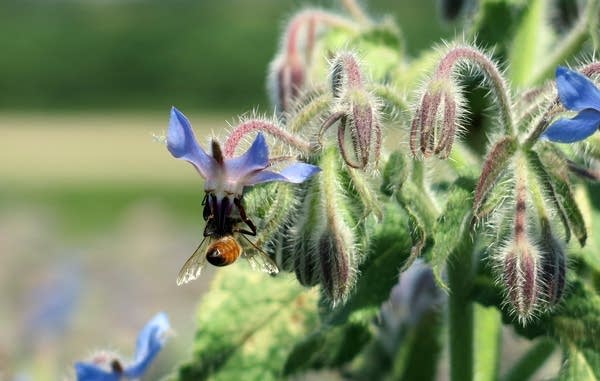Big buzz about program to turn lawns into pollinator habitat

The Lawns to Legumes program is designed to make life easier for pollinators like this one.
Dan Gunderson | MPR News
Go Deeper.
Create an account or log in to save stories.
Like this?
Thanks for liking this story! We have added it to a list of your favorite stories.


